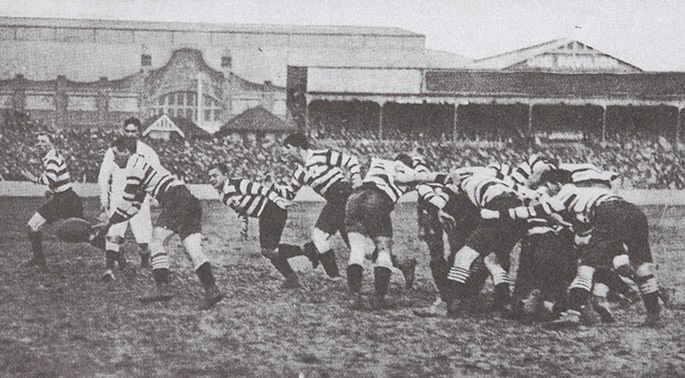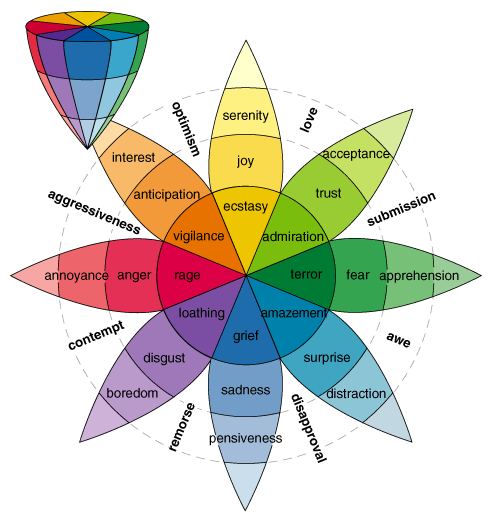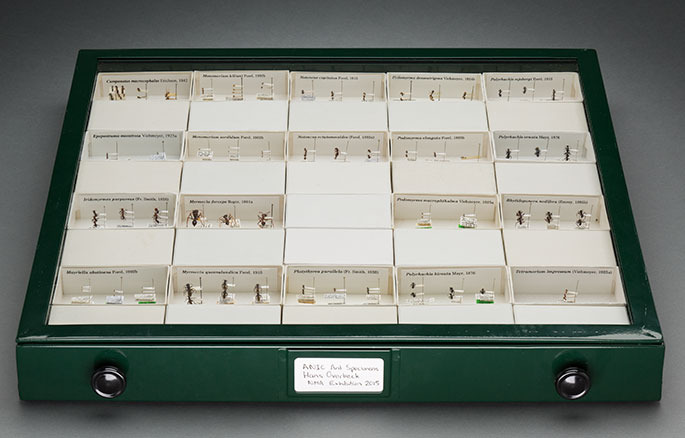‘Gamut of emotions: the Home Front at the National Museum’, Honest History, 12 May 2015
Michael Piggott reviews the National Museum of Australia’s exhibition, The Home Front.
Here’s a challenge to think about over the next ten minutes. If you had to sum up life and society in Australia during World War I in just five chapters of a book or just five themes of an exhibition, what would they be? And if you had to nominate five emotions which said it all … ?
 Rugby League Test, Australia v England, June 1914 (National Museum of Australia/Australian Town and Country Journal)
Rugby League Test, Australia v England, June 1914 (National Museum of Australia/Australian Town and Country Journal)
Realities
The National Museum’s summarising attempt, The Home Front: Australia during the First World War, was both predictable and innovative. ‘Predictable’ is emphatically not a patronising judgement, but acknowledges the realities which inevitably compromise public institutions developing exhibitions today. Accordingly, this new show ticks all the usual-suspect boxes necessary in any attempt to please numerous audiences. Its content is strong in multimedia and drawn from the host collection and elsewhere; there is a complementary website and a publication (40 pages, $10). It is supported by a program of talks and educational materials. It offers the public opportunities to interact in the gallery space and, via a dedicated website, the means for us to add our own content.
Again, like many exhibitions today, The Home Front is the compromised end product of processes we can easily imagine. Curators contend with budget and staffing constraints and are usually limited by what is relevant and available from their own collections (or can be borrowed) and which fits their designers’, marketers’ and conservators’ stipulations. Then there is the imperative to differentiation, sharpened in the light of centenary exhibitions elsewhere in Canberra and various state capitals, sometimes further complicated by internal and external political and ‘stakeholder’ agendas.
Finally, this is a national cultural institution presenting the home front, not one in a state or regional capital, nor indeed one based in a country town. International and interstate visitors to the Museum will arrive with expectations different from those anticipated by the curators of When Hall Answered the Call, recently on show at the edge of the A.C.T. at the Hall School Museum.
Description
The obvious realities duly noted, some genuine strong praise is due curators Joanne Bach and Jono Lineen and the team they led. Their take on the home front rejects chronology, whereas in Great War published histories and other exhibitions, chronology seems unavoidable. Ever since Ernest Scott’s official history of Australia during the war (1st edition, 1937, 7th edition, 1941) historians trying to address specific home front themes such as recruitment, repatriation, federal elections and the conscription referenda find it impossible to avoid the contextual logic of 1914 through to 1918.
The Museum’s primary organising principle for the home front is instead based on emotions – specifically ‘Pride’, ‘Sorrow’, ‘Passion’, ‘Wonder’ and ‘Joy’. Interestingly, emotions are described as being experienced rather than felt by Australians, the explanatory text noting that the exhibition ‘looks at life on the Australian home front, and explores people’s choices, opportunities and challenges in a time of heightened emotions’.
The Museum’s second tier category is individuals’ stories, so beloved today by cultural institutions. Allocated among the five emotion categories are 21 individuals, a family and an Indigenous community. For each there are a few images, objects and about 100 words of text. The matching website pages also include links to further information.
 Les Darcy locket containing photo and lock of his hair, kept by his family (National Museum of Australia)
Les Darcy locket containing photo and lock of his hair, kept by his family (National Museum of Australia)
Comment
The National Museum is clearly not the first cultural institution to address emotion and war, nor emotions and the home front. The Melbourne Museum’s brilliant and deeply affecting Love & Sorrow exhibition is an obvious parallel and it is similarly centred on individuals’ stories. But the NMA’s is the only attempt I know which so consciously frames the subject matter via emotions. Even so, its approach raised more questions than it answered, which is, of course, not necessarily a bad thing.
The reasons for the NMA’s selection of its particular five emotions are not provided, though individually each has an explanatory paragraph headed as follows:
Pride: Pride swelled the hearts of most Australians as their boys marched off to war.
Wonder: In the darkness of war, still there was wonder.
Joy: Even in times of uncertainty and sadness, there are moments of joy.
Passion: Passions were ignited by the challenges, uncertainties and stresses of war.
Sorrow: As casualties mounted on the battlefields, sorrow and grief washed over Australia.
As noted earlier, each emotion has associated brief personal stories and objects. It is clear they were chosen with an eye to the Museum’s own collections, an understandable indulgence. Where they were fitted is another matter. For example, the champion boxer Les Darcy is included under ‘Sorrow’, the panel explaining that he withstood public pressure to enlist and was branded a shirker and even when in the United States, where he volunteered, scheduled fights were cancelled. In April 1917 he collapsed; he died the following month of septicaemia, endocarditis and pneumonia. He was brought back to Australia, and, we are told, ‘Thousands lined the streets of Sydney for his funeral procession. In death, it seemed, all was forgiven.’
Les Darcy’s story could have been placed under any of the five emotions. Another sportsman, the rugby league star, Frank Burge, is included under ‘Joy’, and the divisions caused by the conscription referenda and men’s refusal to enlist are mentioned under ‘Passion’. Indeed, all of the Museum’s decisions to allocate particular individuals’ biographies (and the linked content) to one of the five emotions are arguable. Perhaps that’s the point. The exhibition’s interactive panel allows visitors the opportunity to tag collection items from a larger database of 20 emotions. What schema this list is based on is unacknowledged, though it looks as if it was derived from Plutchik’s Wheel of Emotions.
 Plutchik’s Wheel of Emotions (Dragons Can be Beaten)
Plutchik’s Wheel of Emotions (Dragons Can be Beaten)
The larger inference of this exhibition is that emotions which are felt personally are experienced collectively, the latter hinted at by the inclusion of stories and objects relating to a family and a community. The Museum experimented with societal emotions in its Eternity exhibition, on show since 2001, the schema there comprising joy, hope, passion, mystery, thrill, loneliness, fear, devotion, separation and chance. This whole approach is very much in tune with the significance accorded emotions by the creation in 2011 by the Australian Research Council of a Centre of Excellence for the History of Emotions. Indeed, one of the Centre’s research clusters within this large, seven-year program explicitly concentrates on ‘War and emotions’.
Whether the Museum has identified the five emotions most deeply experienced when societies are under severe stress, such as during total war, is doubtful, but the growing literature on how families dealt with returning wounded (‘shattered Anzacs’) and on the trauma of dealing with the loss of loved ones would suggest they got at least one of them right, that is, ‘Sorrow’. Two other ideas that have been increasingly acknowledged leading up to the centenary – broken communities and resilience – seem to have no anchoring emotion in the Museum’s five yet, as Clare Wright has argued, it was an unassailable fact that the Great War ‘ripped Australia asunder’.
The exhibition gathers the conscription referenda, anti-war protests and industrial conflict under ‘Passion’, perhaps not the best fit, considering the conscription referenda alone were, according to Bill Gammage in The Broken Years, ‘the most savage disputes in Australia’s history’. More broadly, in Joan Beaumont’s words,
public contestation became deeply personalized and bitter in communities where everyone knew each other. Small rural towns were riven apart by the public naming of families who had, or had not, sent their sons to the war. Friendships were left in tatters by personal abuse, the labelling of men still at home as “shirkers” and accusations of cowardice, dishonesty, treachery and betrayal of men at the front.
Certainly not much ‘Joy’, ‘Wonder’ or ‘Pride’ there.
Questioning emotions
What then was the emotional response, if any, this historical emotions-structured home front exhibition elicited in this reviewer today? Initially, and unkindly, the response was disappointment. I wondered was that all there is? For some reason I expected a larger exhibition. Even the space actually in use seemed a little padded out with material (an aircraft engine, a huge trade union banner), possibly telling us the Museum’s collection strengths lie elsewhere. For each individual too, the explanatory words did not seem enough to ‘tell their story’ and illustrate the related emotion.
The exhibits beside the gallery exit need separate noting. These included a set of Daryl Lindsay diagrams of facial scars and a Roll of Honour board for the Carrington Lodge of the Protestant Alliance Friendly Society of New South Wales. Presumably they spoke for themselves: war is hell. Yet I was completely indifferent, if slightly suspicious that I was being manipulated. Had I felt otherwise, I might have voted via the relevant page of the interactive ‘remembering’ website mentioned above (‘How does this make you feel? Click on an emotion to tag it’). Already in early May 2015, the Carrington Lodge Roll of Honour has 498 tagged scores against 12 of the 20 emotions, 90 per cent of participants choosing, curiously to my mind, ‘Remorse’.
Now I know how it works, I have certainly reacted to the Billy Hughes paperweight, boosting the scores for ‘Anger’, ‘Hate’, ‘Annoyance’ and ‘Shame’. On the other hand, the story of and objects representing internee and entomologist, Hans Overbeck, were truly gems. His inclusion alone justified ‘Wonder’, on the face of it not an emotion one thinks associated with wartime.
 Hans Overbeek’s ant specimens (National Museum of Australia/Jason McCarthy)
Hans Overbeek’s ant specimens (National Museum of Australia/Jason McCarthy)
It’s an interesting question for a Museum to ask: how does this make you feel? Here the contrast with the Melbourne Museum’s Love & Sorrow is again useful. Of that exhibition, Michael McKernan wrote: ‘Put simply, it is the most exquisite, moving, and intense exhibition on aspects of the First World War that I have seen anywhere in the world’. Having viewed it myself last year, I agree it was very, very powerful.
Of course, the Melbourne Museum was covering the long aftermath decades of families’ responses, and had recorded interviews to draw on as well as exhibits, while the National Museum’s exhibition is focussed on 1914-1918. But both shows deal directly with war and emotions and McKernan’s suspicion that the design of Love & Sorrow ‘was deliberately claustrophobic, enclosed and somewhat frightening, to heighten the engagement of the emotions’ begs an important question. If, as he noted, Love & Sorrow was openly and deliberately working on the emotions of its visitors, if its strong and powerful message was that ‘war is an unmitigated and abhorrent disaster and we need always to be conscious of its enduring impacts across subsequent generations’, what then was the National Museum trying to do and say? Perhaps just to encourage emotional response and, beyond that, to say nothing.
In her revealing essay introducing the Museum’s Eternity exhibition publication, Marion Stell explained how the NMA’s 2001 emotions framework was adopted. The work of the great English scholar Theodore Zeldin was one influence (specifically his An Intimate History of Humanity) but also relevant was a crisis of confidence among museums during the mid-1990s. They felt threatened by virtual exhibitions and wondered if people would ever physically visit museums again. ‘Reassuring research suggested that visitors would always come in person to see the real, the authentic object, because it invoked an “emotional response” in the visitor’, Stell wrote.
And in 2015? Last year, against the backdrop of the anniversary of 9/11, musician and commentator Michael Stipe commented, ‘More and more, what we “feel” about collective history seems like something manufactured, and kind of pumped into us, rather than a real emotion’. ABC presenter James Valentine had been similarly fed up. The day after Anzac Day last month he declared:
I have Gallipoli fatigue. [I am sick of] being told repeatedly what I should feel. Exactly how solemn I should be, which parts of the story I should mark and what lesson I should draw from them, how our nation was forged on these distant sands, what it meant for us all back home and on and again and over and again.
All of which makes any attempt by an Australian cultural institution focussing on war extremely challenging. The National Museum’s latest effort was thought provoking and informative. That was enough for me, and I am grateful.


Leave a Reply
You must be logged in to post a comment.